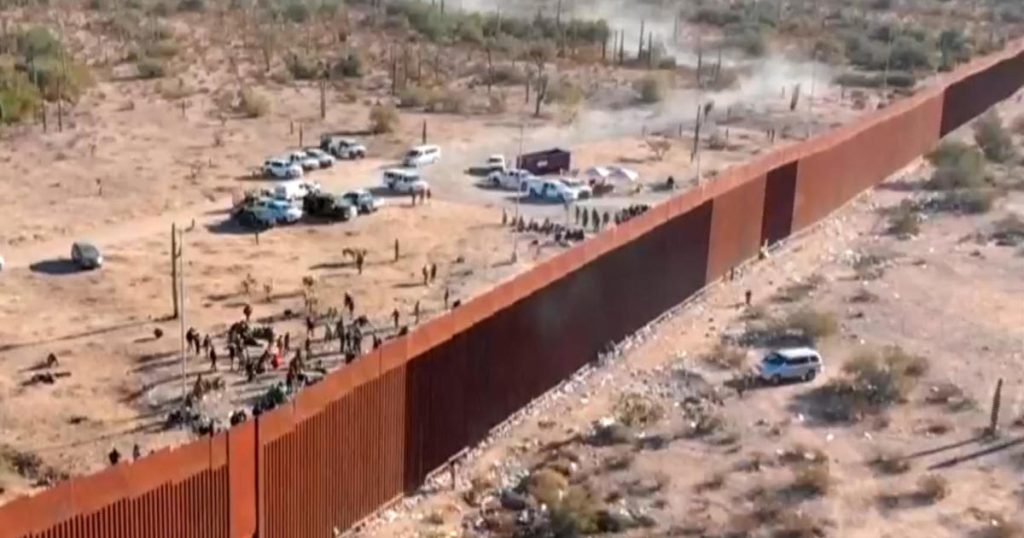In recent months, Border Patrol agents have noticed a significant decrease in the number of migrant apprehensions at the U.S.-Mexico border. This trend has been observed since the beginning of the year and is attributed to various factors that have contributed to the decrease in illegal crossings. Journalist Adam Yamaguchi visited the border near Tucson, Arizona, to investigate the reasons behind this drop in apprehensions and to understand what measures are being implemented to address this issue.
One reason for the drop in migrant apprehensions is believed to be the impact of a more aggressive approach taken by the Biden administration in deterring illegal immigration. Increased enforcement efforts, coupled with the use of technology and surveillance equipment, have made it more difficult for migrants to enter the country unlawfully. The Biden administration’s commitment to enhancing border security and cracking down on human smuggling and trafficking networks has played a role in reducing the number of unauthorized border crossings.
Another contributing factor to the decrease in migrant apprehensions is the COVID-19 pandemic, which has led to restrictions on travel and movement across international borders. The pandemic has disrupted traditional migration patterns and has made it challenging for migrants to reach the U.S.-Mexico border. Restrictions on nonessential travel and the implementation of health protocols have had an impact on the flow of migrants and have contributed to the decline in apprehensions at the border.
In addition to enforcement efforts and the impact of the pandemic, other factors may also be influencing the decrease in migrant apprehensions. Economic conditions in migrants’ home countries, changes in U.S. immigration policies, and the prospect of potential changes in asylum regulations may be affecting individuals’ decisions to attempt unauthorized border crossings. The complex interplay of political, economic, and social factors plays a role in shaping migration flows and patterns, and understanding these dynamics is crucial for developing effective and sustainable solutions to address illegal immigration.
Despite the drop in migrant apprehensions, challenges remain in managing the U.S.-Mexico border and addressing the root causes of unauthorized migration. Border Patrol agents continue to face pressure to secure the border and prevent illegal crossings, while also providing humanitarian assistance to individuals in need. The need for comprehensive immigration reform, increased collaboration with international partners, and investment in border infrastructure and technology are key components of a multifaceted approach to addressing immigration issues and ensuring the integrity and security of the U.S. border.
As the situation at the U.S.-Mexico border continues to evolve, it is essential to monitor and assess the effectiveness of border security measures and enforcement strategies. By analyzing trends in migrant apprehensions, understanding the factors driving unauthorized migration, and exploring new approaches to managing immigration flows, policymakers can work towards creating a more secure and efficient border system. Collaboration between government agencies, community organizations, and advocacy groups is essential for developing holistic solutions that address the complex challenges posed by illegal immigration and ensure the protection of migrants’ rights and well-being.


